Ruin Raider
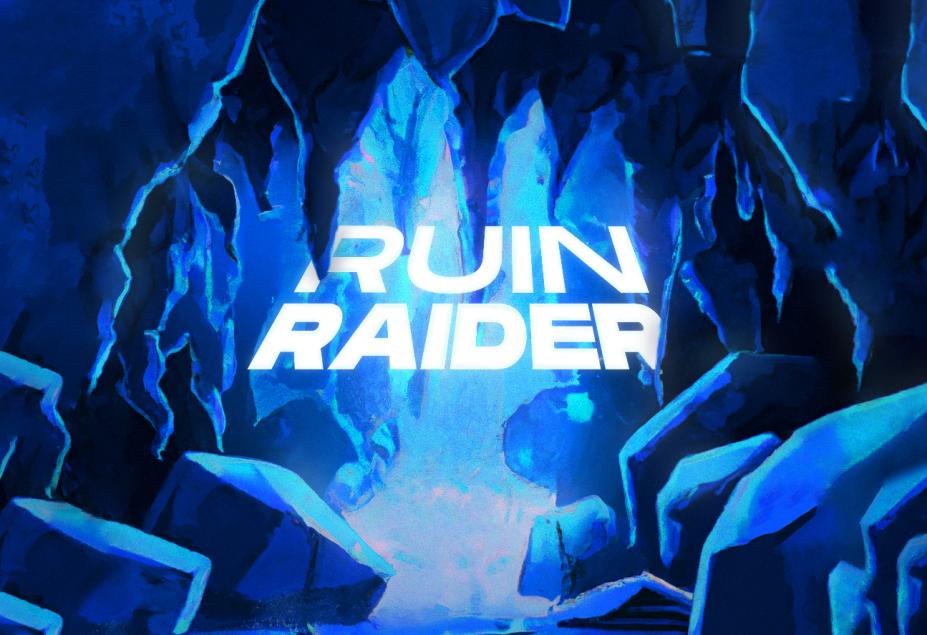
A top-down shooter RPG made in Pygame. Created for Western Engineering's Software Construction course.
Python
Pygame
Tiled
Object-Oriented Programming
Graphic Design
Game Development
Algorithmic Design
OVERVIEW
Replayable. Riveting. Relentless.
Ruin Raider is a top-down shooter created in Python using Pygame and Tiled. In the game, players take on the role of a mercenary hired to explore the ruins of a desolate world and collect valuable crystals known as Arctium. As they progress through the game, they must defeat various enemies, from basic crawlers to poisonous cave spiders and autonomous turrets.
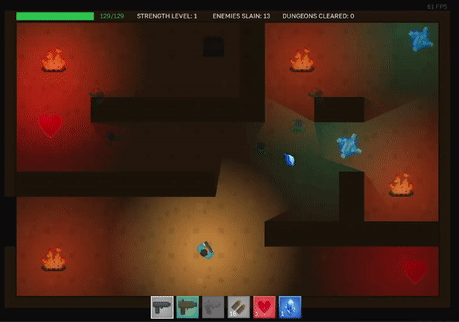
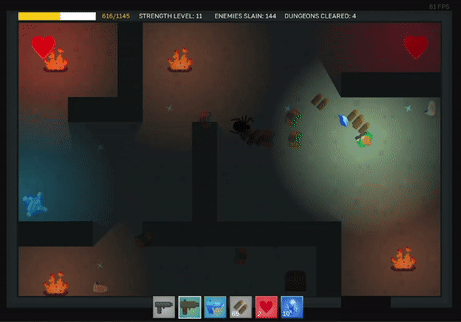
GAME DEVELOPMENT
An Object-Oriented Approach.
Ruin Raider was constructed using object-oriented design principles. For example, enemies and players share a common “character” class to house movement logic, collectibles such as hearts and ammo share a common “item” class to house inventory logic, and all visible entities share a common “entity” class to house collision and sprite logic. Other core objects within the game include:
- Transform: Dictates the position, rotation, and scale of the object for the purposes of collision and movement.
- Sprite: Defines the sprite of the object.
- Light: Defines the light source of the object.
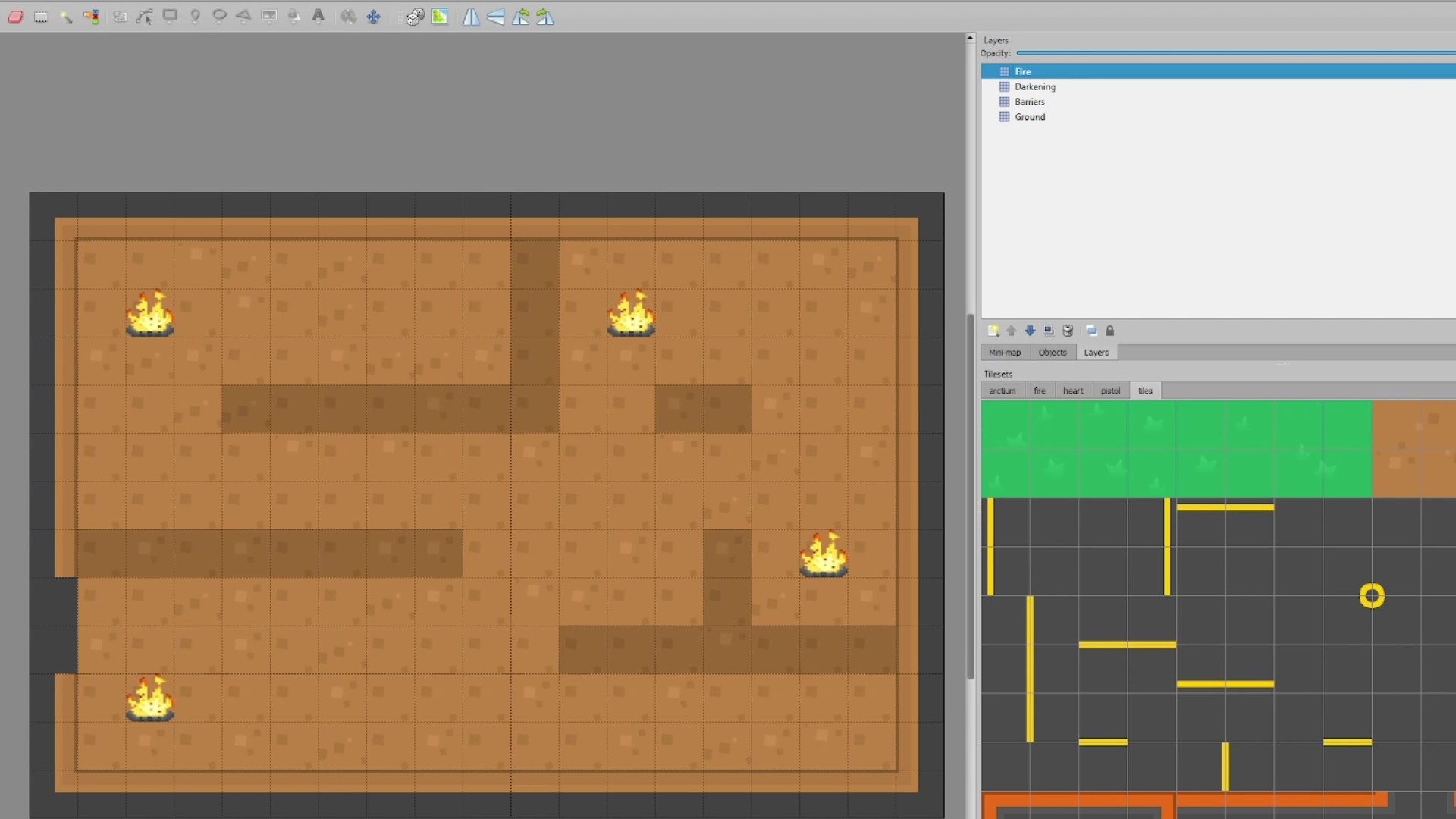
The levels for the game were created in Tiled, a software that allows one to export layers of drawn tiles as a collection of surfaces. This made it easy to extract objects from the levels; walls could be extracted for collision and fire sprites could be extracted for lighting.
PATHFINDING ALGORITHM
On the Hunt.
Ruin Raider utilizes a custom A* pathfinding algorithm that allows the enemies to track and chase the player around obstacles.
# Loop through the open nodes
while len(toSearch) > 0:
current_node = min(toSearch, key=lambda node: node.get_f())
if current_node == target_node:
path = [current_node]
# Loop through the connections
while current_node.connection is not None:
# Add the connection to the path
path.append(current_node.connection)
# Set the current node to the connection
current_node = current_node.connection
# Reverse the path and return it
return path[::-1]
# Remove the current node from the open nodes list and add it to the closed nodes list
toSearch.remove(current_node)
searched.add(current_node)
for neighbor in current_node.neighbors:
in_search = neighbor in toSearch
# If the neighbor is not active or the neighbor is in the closed nodes list, skip it
if not neighbor.active or neighbor in searched:
continue
cost_dist = np.sqrt((neighbor.x - current_node.x) ** 2 + (neighbor.y - current_node.y) ** 2)
cost_to_neighbor = current_node.get_g() + cost_dist
# If the neighbor is not in the open nodes list, set the neighbor's g value to the cost to the neighbor and add it to the open nodes list
if not in_search or cost_to_neighbor < neighbor.get_g():
neighbor.set_g(cost_to_neighbor)
neighbor.connection = current_node
if not in_search:
h_dist = np.sqrt((neighbor.x - target_node.x) ** 2 + (neighbor.y - target_node.y) ** 2)
neighbor.set_h(h_dist)
toSearch.add(neighbor)An object called a Navmesh houses the matrix of nodes that determine if a given pathfinding agent can successfully move to a given point. To calculate the path, each node holds a reference to its neighbours and an f-score, which rates how beneficial the node is to a path. This f-score is the key to the A* algorithm and it is calculated using the sum of the path cost of the node (g score) and the distance between the node and the target (h score).
LIGHTING ENGINE
An Immersive Dungeon-Crawling Experience.
This game utilizes an open-source lighting engine with real-time dynamic rendering to give the illusion of raytraced lighting.
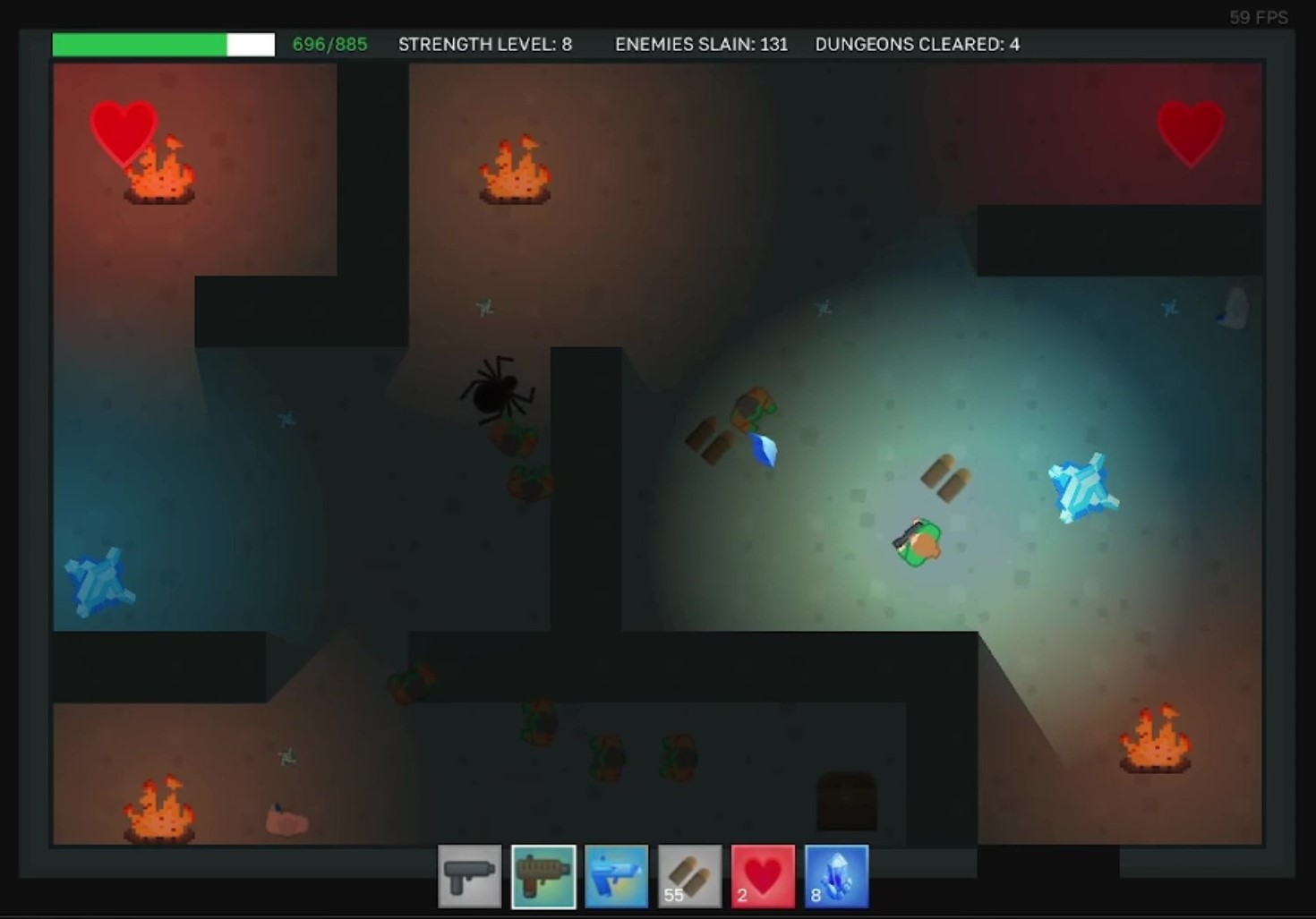
The idea behind the lighting engine is that it layers pygame surfaces on top of all other rendered sprites, as they have unique rendering flags that allow them to be dynamically rendered. The source code for the lighting engine can be found here.
OTHER GAMEPLAY FEATURES
Customizable. Repeatable. Relentless.
Ruin Raider features multiple weapons and multiple playable characters, each with their own unique stats and playstyles. The character select screen, accessible from the main menu. Switching characters does not reset the player's level, but instead modifies their current HP and base speed.
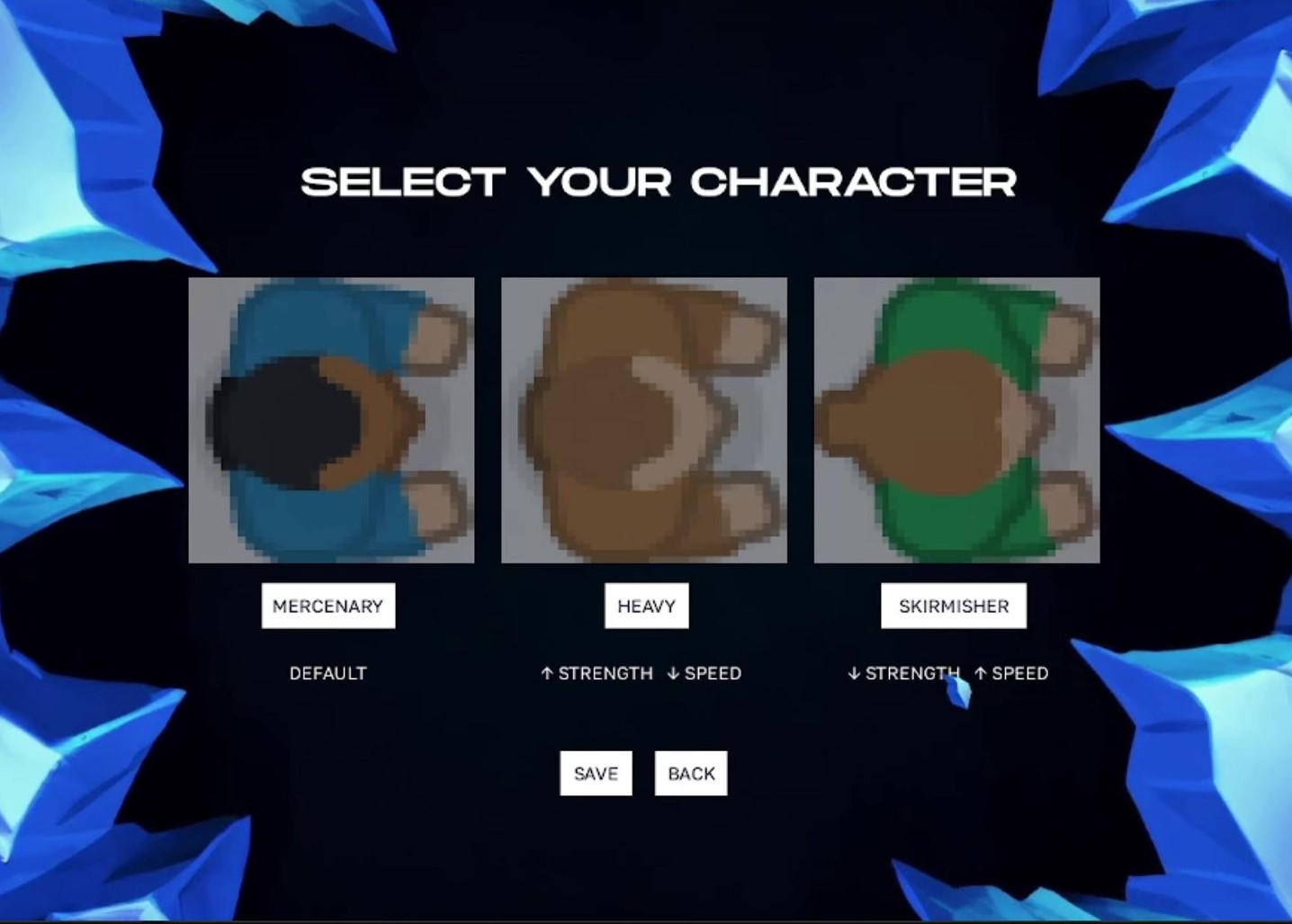
Ruin Raider also includes a player progression system where players get stronger by defeating enemies. After progressing far enough, players are able to take on the ArctBeast, a final boss that offers a unique gameplay mechanic and valuable rewards.
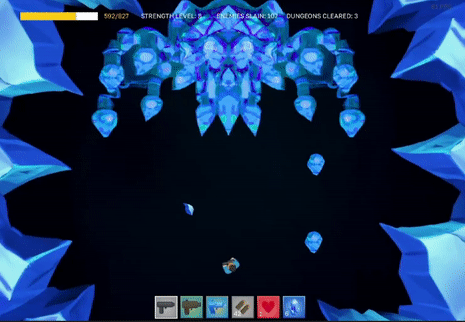
FUTURE IMPROVEMENTS
What's Next?
Given the time frame my team had to complete the project, there are a number of things that we would have liked to include. Most notably, we would have liked to implement our own lighting engine rather than using an open-source one. This lighting engine is only able to project light radially outwards; by creating our own, we may have been able to make the lighting emerge from the player like a flashlight would, enhancing the immersive experience.
In terms of gameplay, we are satisfied with the experience of the current dungeons but we would have liked to have a larger selection of levels and enemies to explore. Additionally, having more varied weapon options, such as melee weapons, would have helped to broaden the gameplay experience.
In spite of this, I am satisfied with how the project turned out and find the game to be genuinely fun to play. To learn more about the game mechanics and to hear the custom music we created for the game, you can find the demo video for the game here.
CREATED BY DAVID TAM
LONDON, ON, CANADA